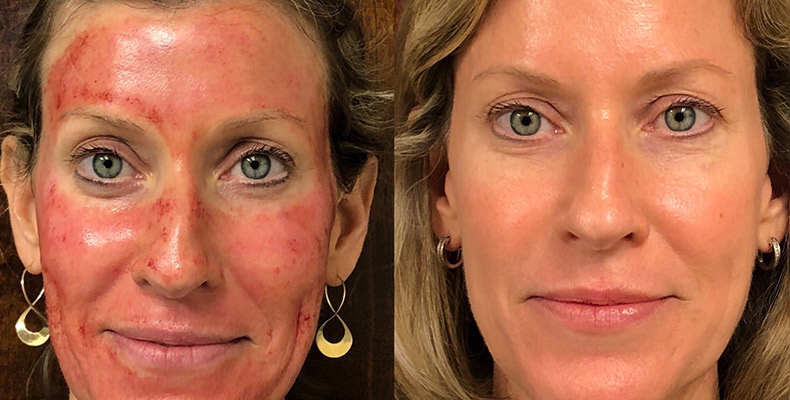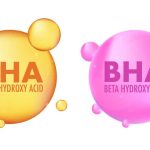In skincare, having an endless assortment of products available can be overwhelming. When your routine includes moisturizer, serum and other treatments, you may not know how to use each product to maximize results. By understanding how to stack products, you can use them more effectively to achieve your skincare goals. Keep reading to learn how to layer skin products.
Establish a skincare routine
People of all ages can benefit from a skincare routine. Your age and skin type will determine which products work best for you. If you do not know where to start, read our recent blog on creating a skin care routine. A basic skincare routine can be as simple as cleansing, moisturizing and protecting your skin with sunscreen.
If you incorporate other skin products into your routine, you might need guidance on how to layer them. Follow this step-by-step guide to layer your products in the correct order.
Step 1: Cleansing
The foundation of any effective skincare routine is a clean canvas. Begin by cleansing your face with a gentle cleanser for your skin type in the morning and at night before bed.
This first step removes makeup, dirt and excess oil so the next layer of the product will penetrate better. If you exercise, spend time outside or swim, wash your face afterward to ensure it’s free of sweat or chemicals.
Step 2: Toner
Some people prefer using a toner after cleansing. If you have oily skin, it can help remove additional oil and prep your skin for the next step. Apply toner with a cotton ball or pad and give it a few seconds to absorb into the skin.
Step 3: Exfoliation
After cleanser and toner, you can incorporate a chemical exfoliating product to remove dead skin cells and prevent signs of aging. Exfoliation primes your skin for better absorption of the next products in your routine.
Chemical exfoliants, a liquid applied after cleansing, use alpha-hydroxy acids (AHAs) and beta-hydroxy acids (BHAs). Physical exfoliants are cleansers mixed with granules or particles that physically remove dead skin. Using physical exfoliants daily is not recommended. And these types of products may be too harsh for some skin types. Check with your dermatologist if you have sensitive skin before trying a physical exfoliant.
Step 4: Serum
Serums are potent formulas with active ingredients that target specific concerns. Serums are also an optional treatment for some. If you use multiple serums, apply the thinnest one first.
For example, if you use a vitamin C serum and a hyaluronic acid serum, apply the vitamin C serum first. This principle ensures that each serum can penetrate deeply without interference from thicker products.
Chemical serums, like the exfoliants mentioned above, are sometimes in serum form rather than liquid. It is not necessary or recommended to layer two strong ingredients like AHAs and BHAs in different formulas.
Step 5: Eye cream
Your under-eye area needs special attention because it is a delicate area. An eye cream with ingredients like peptides and hyaluronic acid can help address concerns like puffiness, dark circles and fine lines.
Be sure to use a cream or serum specifically for the eye area. The skin around the eyes is thinner, so it does not absorb lotions as well. Using a heavy cream can lead to milia, little white bumps of trapped dead skin cells.
Step 6: Moisturizer
Moisturizers are your skin’s best friend because it locks in hydration and creates a protective barrier against environmental elements. Choose a moisturizer that suits your skin type. Someone with oily skin will probably prefer a lightweight lotion. If you have dry skin, you may need a thicker cream.
Apply moisturizer after serums to ensure that your skin stays hydrated. It also helps lock in the products you used in previous steps. If you use an eye cream, you do not need additional moisturizer in that area. If you do not use eye cream, apply a tiny amount.
Step 7: Sunscreen
No skincare routine is complete without sunscreen to avoid sun damage. Apply sunscreen in the morning to protect your skin from harmful UV rays. Sun exposure can cause premature aging and skin cancer.
Sunscreen should always be the last step in your daytime routine, whether you plan a day outside or not. Use a broad-spectrum sunscreen with an SPF of 30 or higher. If you plan to be in the sun, reapply it every two hours.
Evening routine for how to layer skin products
If you are concerned about signs of aging, incorporate a retinoid or retinol into your evening routine. These Vitamin A formulas encourage cell turnover and collagen production. Since retinoids can be sensitive to sunlight, it is best to use them in the evening.
Retinoids can be found in over-the-counter treatments, while retinol is only available as a prescription, like Tretinoin.
Apply your anti-aging retinoid or retinol after cleansing and serums, then apply moisturizer. Some people prefer a lighter moisturizer during the day, especially if they wear makeup and a thicker lotion at night.
Weekly treatments
Incorporating weekly treatments like masks and peels can give your skin an extra boost. These treatments often contain concentrated ingredients that address specific concerns, such as hydration, exfoliation or detoxification.
Apply masks and peels after cleansing and remove, if necessary, before applying your moisturizer.
Be flexible
While this layering guide provides a structured approach, remember that everyone’s skin is unique. Pay attention to how your skin responds to different products and adjust your routine accordingly. And remember that new products take time to show results, so be patient.
If introducing new products, consider doing a patch test to avoid potential adverse reactions. If you are concerned about other skin issues, contact your dermatologist to get recommendations before starting a new treatment or routine.
Cosmetic dermatology in South Carolina
Columbia Skin Clinic is the Midlands’ largest and most respected dermatology practice. If you would like a personalized treatment plan for your skin, schedule a consultation with one of our board-certified dermatologists.







